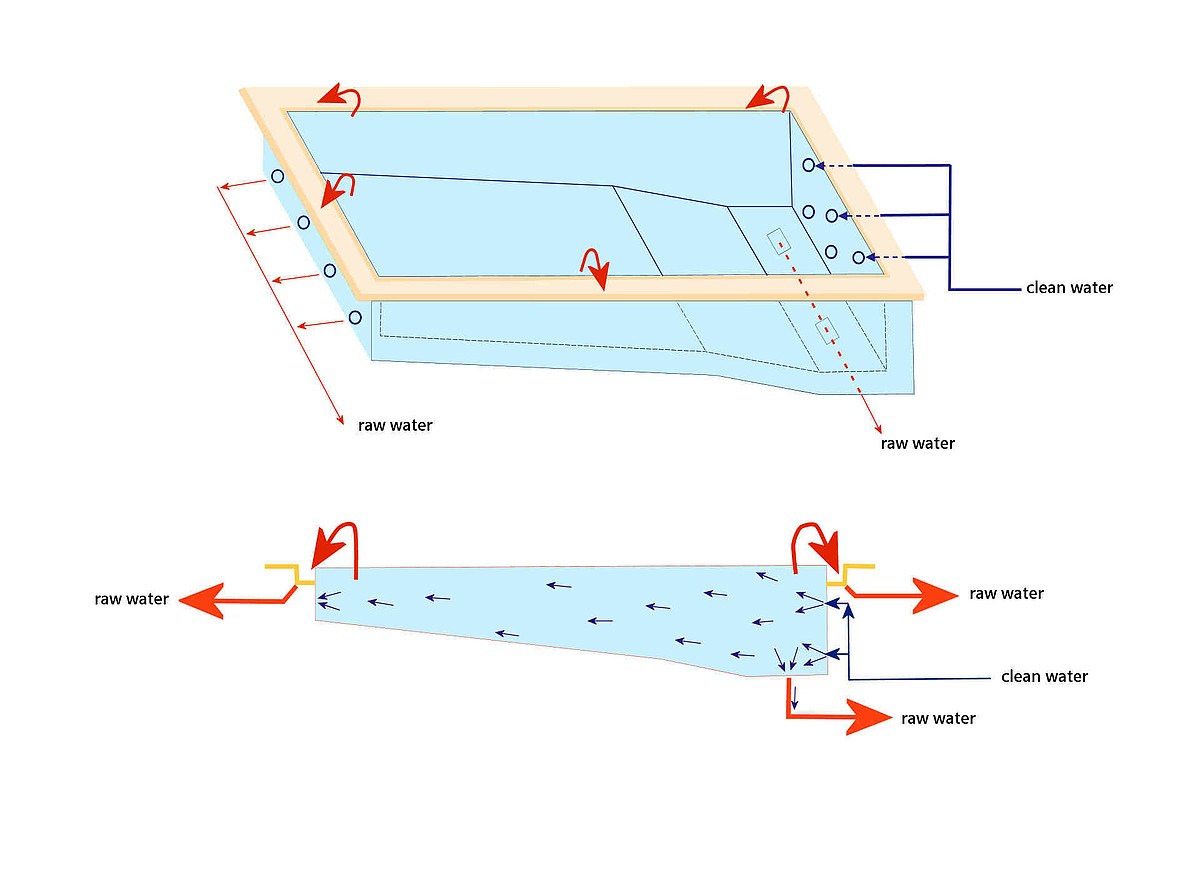Technical details
Differences between pool water and drinking water
The most important difference for the treatment is the much smaller water volume which is available for each guest and is not renewed by fresh water, but always circulating. In addition, the water is often very warm, which is very favorable to the living conditions of all sorts of pathogens.
The swimmers carry germs and organic substances in the form of skin particles, sweat, cosmetics, hair, saliva, etc. into the pool water. An amount of 1 to 1.5 g of organic carbon (TOC = Total Organic Compound) per swimmer is assumed. Swimming pools are additionally contaminated by environmental pollution and increased algae susceptibility. A further problem is the burden of "bad" microorganisms from the faecal area. These are entered either by lack of hygiene at individual visitors (no hand wash).
The organic substances floating around in the water provide a perfect breeding ground for germ growth, which can lead to the spread of dangerous diseases. The treatment of the water serves to establish a stationary state between cleaning and contamination. The impurities (e.g., hair) impacted by the bathers are mechanically removed and microorganisms are killed. To achieve a sufficient cleaning effect, a combination of the stages of flocculation, filtration, oxidation, adsorption and disinfection is used.
Technical characteristics
Construction, size and primary purpose of the pools are very diverse. In order to create a technical comparability for all systems - and to establish generally applicable regulations - comparable parameters are used.
Pool flow
Basically, the water volume in the basin is almost constant. The water passing through the inflow devices is opposite to the discharged (contaminated) water, which is passed through the overflow channel into the cleaning circuit back to the largely predominant part.
The effluent is referred to as "raw water", which reprocessed is called as "clean water".
The raw water is collected, cleaned and then returned to the basin as pure water in the processing plant, usually located in the basement.
Only the water losses are replaced by fresh water. The special demands on pool water result from this cycle with the relatively low water volume.
